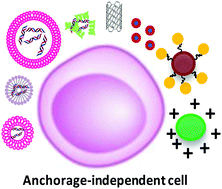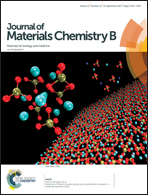Biomaterials for polynucleotide delivery to anchorage-independent cells
Abstract
Anchorage-independent cells possess morphological features and cell membrane compositions that are distinct from adherent cells. They display minimal surface area, have a low rate of endocytosis and generally possess few proteoglycans which make it a challenge to deliver nucleic acids into them. Wide ranges of methods and materials have been developed to tackle the delivery obstacles for the polynucleotide-based therapeutics in modifying non-adherent cells. This article summarizes the techniques and biomaterials that have been utilized for transfection of anchorage-independent cells. First, physical techniques are briefly described along with particular applications for which they are well-suited. The structure–activity relationship of various biomaterial carriers of polynucleotides are then discussed with strategies employed to enhance their capability to transfect anchorage-independent cells. In conclusion, the authors' perspectives on different methods for polynucleotide delivery to primary human cells are compared, along with a discussion of their progression towards clinical trials.

- This article is part of the themed collection: Recent Review Articles


 Please wait while we load your content...
Please wait while we load your content...